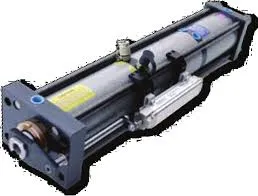Hul . 27, 2024 18:11 Back to list
Steps to Successfully Rebuild a Hydraulic Cylinder for Optimal Performance and Longevity
Rebuilding a Hydraulic Cylinder A Comprehensive Guide for Manufacturers
Hydraulic cylinders are vital components in many industrial applications, providing the force needed for various machinery to operate effectively. They are commonly found in construction equipment, agricultural machinery, and manufacturing facilities. Over time, however, these cylinders can wear down due to prolonged use, exposure to contaminants, and stress from external forces. When a hydraulic cylinder fails, it can lead to costly downtime and repairs. As a manufacturer, understanding the process of rebuilding hydraulic cylinders is essential not only for enhancing performance but also for extending their lifespan.
Understanding the Need for Rebuilding
Rebuilding a hydraulic cylinder typically becomes necessary when the equipment experiences leakage, reduced operational efficiency, or physical damage. Common symptoms of a failing cylinder include excessive noise during operation, visible leaks from the seals, or a lack of responsiveness in tasks requiring hydraulic force. Addressing these issues promptly through rebuilding can save significant resources when compared to purchasing new cylinders.
The Rebuilding Process
1. Assessment and Inspection The first step in the rebuilding process is a thorough inspection of the damaged cylinder. Inspect the outer casing for cracks, dents, or signs of wear. Check the piston, rod, seals, and other internal components for damage. A detailed assessment will help determine which parts need replacement and whether the cylinder can be repaired.
2. Disassembly Once a comprehensive evaluation is complete, the next step involves disassembling the hydraulic cylinder. This requires specialized tools to carefully remove the various components without causing additional damage. Each part should be cleaned and organized for easy identification during reassembly.
3. Replacement of Worn Parts With the cylinder disassembled, it’s time to replace the worn or damaged components. This may include seals, O-rings, and guide rings. It's crucial to use high-quality replacement parts that meet or exceed the original specifications to ensure reliable performance.
rebuilding a hydraulic cylinder manufacturers

4. Surface Grinding and Honing After replacing the internal components, surface grinding and honing of the cylinder bore and piston may be necessary. This process removes any imperfections and provides a smooth finish that enhances sealing and reduces wear on new parts.
5. Reassembly Once all parts have been inspected, cleaned, and replaced, the hydraulic cylinder can be reassembled. Care must be taken to follow the original specifications and torque settings to ensure that the cylinder operates as intended.
6. Testing Before returning the rebuilt hydraulic cylinder to service, conducting pressure tests is essential. This will verify the integrity of the cylinder and ensure that there are no leaks or faults. Testing under operational conditions also helps ensure that the cylinder functions efficiently.
Benefits of Rebuilding Hydraulic Cylinders
Rebuilding hydraulic cylinders offers numerous advantages for manufacturers
- Cost Savings Rebuilding is often significantly more cost-effective than purchasing new cylinders. This allows companies to allocate resources to other critical areas. - Environmental Impact By opting for rebuilding over replacement, manufacturers can reduce waste and promote sustainability in operations. Reusing components minimizes the need for new materials and reduces landfill contributions. - Improved Performance A properly rebuilt hydraulic cylinder can function as efficiently as a new one, enhancing overall machinery performance and productivity.
Conclusion
For manufacturers, the ability to rebuild hydraulic cylinders is not just a technical skill; it’s a crucial element of effective maintenance and operations management. By investing in the proper tools, training, and processes, companies can extend the life of their hydraulic systems, reduce costs, and improve their overall productivity. Understanding the rebuilding process will not only benefit your operation but also contribute positively to the bottom line.
-
Custom-Built 2-Post Lift Power Units High-Performance Hydraulic Systems
NewsJun.01,2025
-
High-Performance Hydraulic Damping Cylinders Manufacturer Superior Power
NewsJun.01,2025
-
Custom Dual Loader Hydraulic Cylinders Manufacturer Durable Solutions
NewsMay.31,2025
-
Custom Ladder Rack Hydraulic Cylinders Heavy-Duty & Tailored Solutions
NewsMay.31,2025
-
Tilt Bed Trailer Hydraulic Cylinder Factories Heavy-Duty Custom Solutions
NewsMay.31,2025
-
Premium Car Tailgate Power Units Reliable OEM Solutions
NewsMay.31,2025
